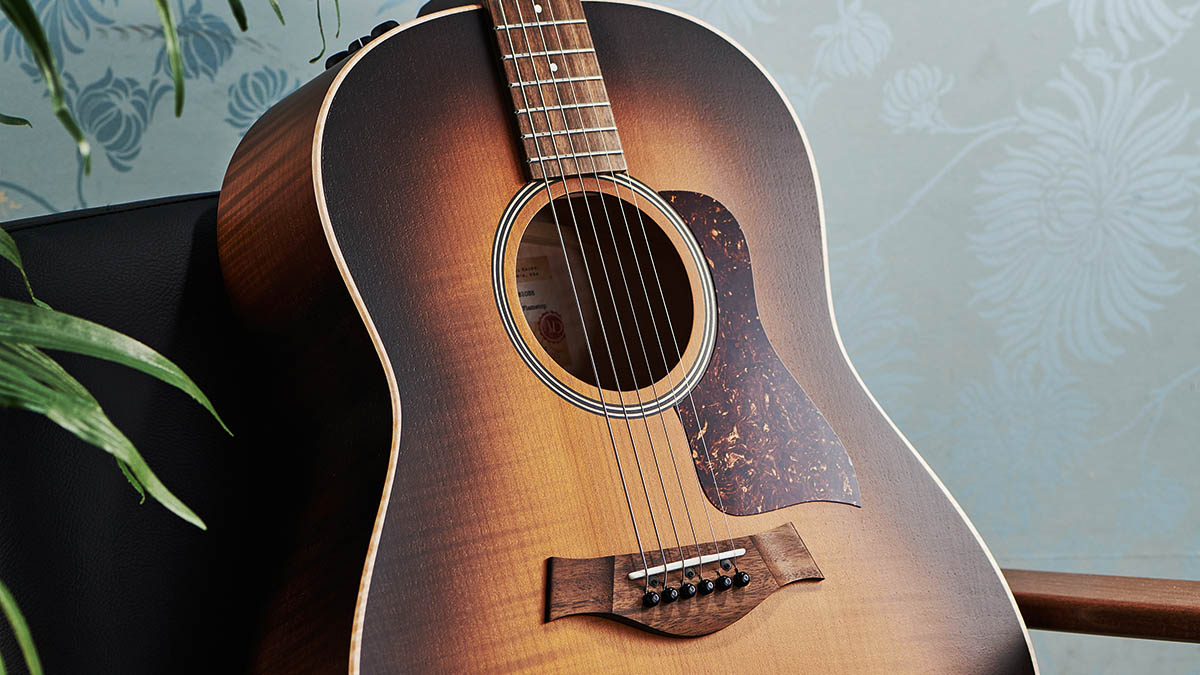Guitar World Verdict
This acoustic is in a highly competitive market, but if you’re looking for something that leaves the path well trod you’d be well advised to seek out the AD27e – we’re pretty sure you’ll be in for a pleasant surprise.
Pros
- +
A well-built, workmanlike dreadnought, with an unusual edge.
- +
A lot of tone and personality.
- +
Expression System 2 is quality.
Cons
- -
The price – and that maple top might deter the traditionalists.
You can trust Guitar World
You have to admit that it’s quite a bold move for Taylor to proclaim proudly that its latest instrument “doesn’t sound like a Taylor”. But once you’re made aware of the rationale behind the move, things become a little clearer. A lot of it has to do with supply chain issues caused by the previous two years and, in many cases, that are still ongoing.
Luthier-grade wood supplies have been affected by the fallout caused by the global pandemic as much as any other commercial commodity and so rather than allowing backorders to get to avalanche proportions, Taylor came out fighting.
“Let’s cook with what we have in the pantry” was the initiative that caused the company to re-examine the situation, and a survey of the timbers that they had in stock revealed that there was a plentiful supply of maple.
The rest was left up to the vision and ingenuity of master craftsman Andy Powers who reasoned that while maple was an unusual choice for a top wood, as opposed to the more ubiquitous spruce or cedar, for instance, there was no reason why it couldn’t be called into action if it was given some specialist fettling and was able to prove its worth in the preliminary stages.
Fine-tuning the maple presented its own set of challenges, as Andy describes in our interview that follow this review, where he elaborates as to why maple can be a little “squirrelly” when employed as a top wood.
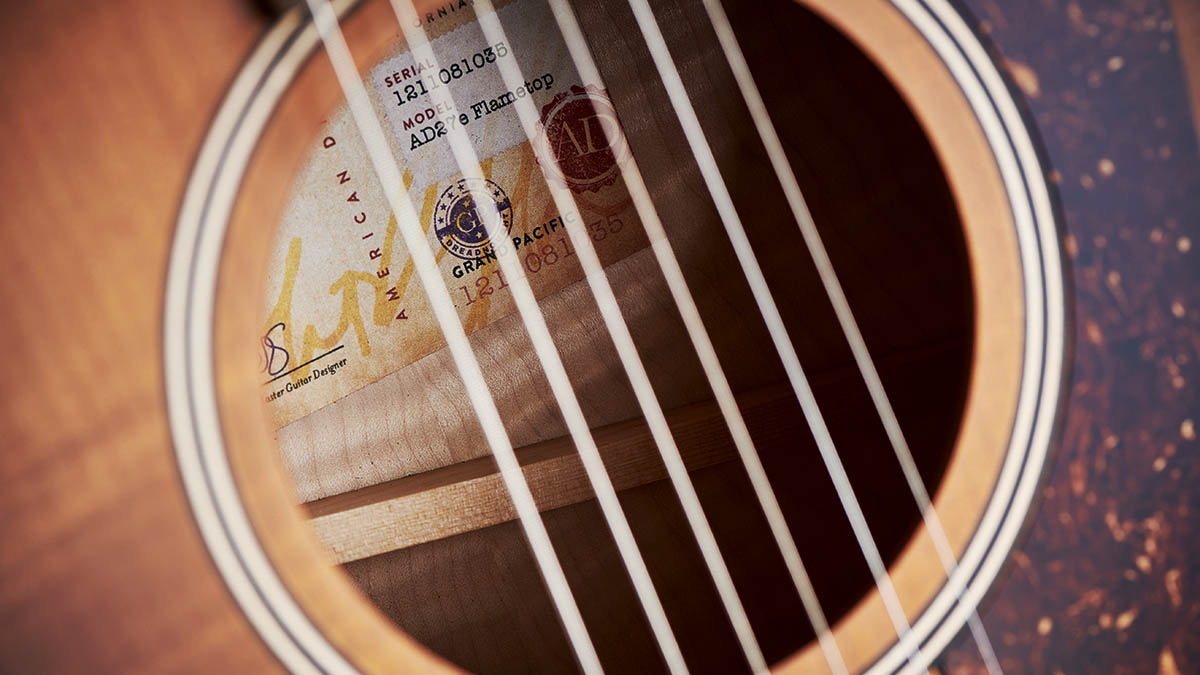
Once the wood was tamed, however, it was found to produce a tone that was altogether different to Taylor’s standard fare.
Described as “dusky, woodier, grittier”, it was leagues away from the more “high fidelity” sound for which Taylor guitars have become known. In addition, the more they listened to what they had been able to produce, the more it seemed like a missing piece in the company’s sonic portfolio.
A husky, earthy sound that might just appeal to those players looking for an instrument that would embrace their roots, Americana or country blues ambitions. It also seemed to be a perfect fit for Taylor’s slightly more leftfield American Dream series, which has been loudly applauded in these pages in the past.
And so, in short, what we have before us today is a brand-new Taylor with a slightly maverick topwood and the potential for a big surprise awaiting us in the tone department. Let’s dive in…
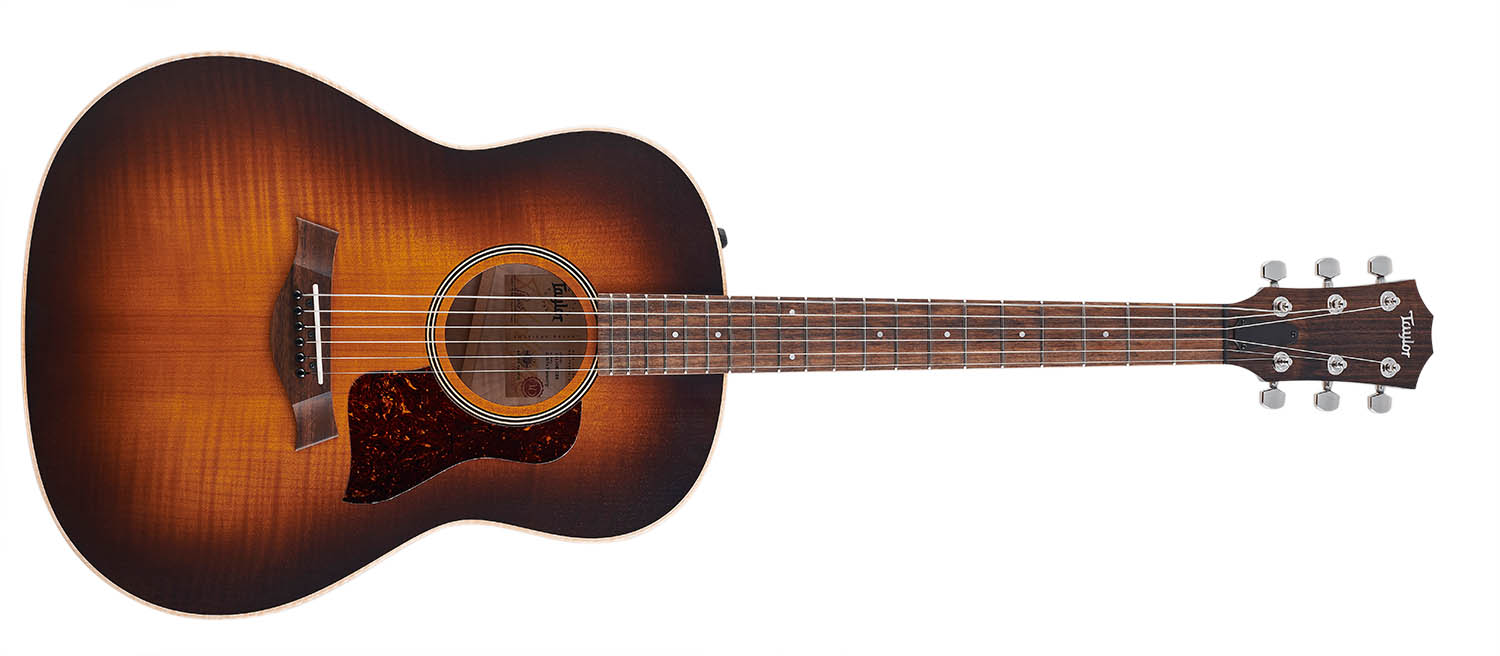
Feel & Sounds
The whole ethos behind Taylor’s American Dream Series is to provide pro-level instruments that are more accessible to the working musician than, say, a top-of-range guitar festooned with bunting, whistles and bells.
Stripped back and 100 per cent functional is the order of the day, and that’s exactly what we find upon opening the AD27e’s case. If your idea of flamed maple is framed by furniture finish tops, think again.
Here, we find a darkish smokey sunburst that all but obscures the flame in the wood, the satin finish giving the impression of an instrument that has already travelled around the block a few times and is thoroughly street savvied. It’s a workmanlike look, for sure, and we’re already wondering if the AD27e has been dressed to suit the job it’s expected to do.
As the use of maple is the elephant in the room here, it’s worth taking a quick look at the sonic properties we can expect from it. In its more familiar guise as a back and sides tonewood, maple is known for its brightness and articulation with good balance and projection.
Taylor tells us that when they use maple for a guitar’s back and sides, they voice the instrument to bring out its warmth, complexity and sustain. But what about using it as a top wood?
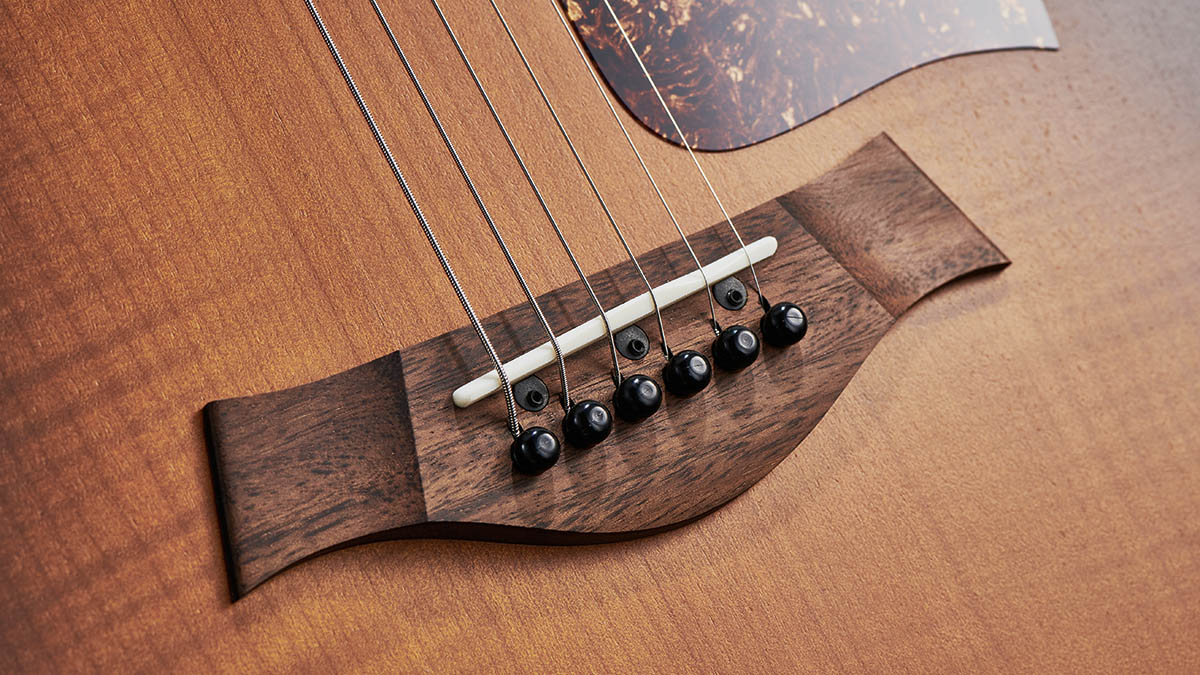
Here, the emphasis is on a “dry, midrange-centric tone” and promises a voice that, when combined with the company’s V-Class bracing, will produce a “rustic, chunky sound”.
To illustrate just how far Andy Powers will go to squeeze every drop of his desired tone for the AD27e, the guitar has been strung with his recommended type of string – a set of D’Addario Nickel Bronze 0.012 to 0.053 gauge: “The strings have a unique response when you put them on an acoustic guitar – they’re not dull sounding, but it’s not the same vibrant presence you expect from a brand-new set of bronze strings,” he tells us.
Playability overall is very, very good, with a very even response across the whole range, the various frequencies playing nicely together wherever you find yourself on the fretboard
Completing the medley of woods present here, we have maple for the neck and eucalyptus for the fingerboard and bridge. Eucalyptus might be a bit of a new age traveller, too, but it’s another wood that is in plentiful supply across the globe (so much so that in some areas it’s regarded as invasive), is not in any way endangered and fits Taylor’s ecological aspirations like a glove.
Visually, it’s incredibly similar to the look of rosewood, whereas tone wise it’s known for strong mids and trebles with a balanced bass and so there’s clearly a sonic picture emerging here with the AD27e.
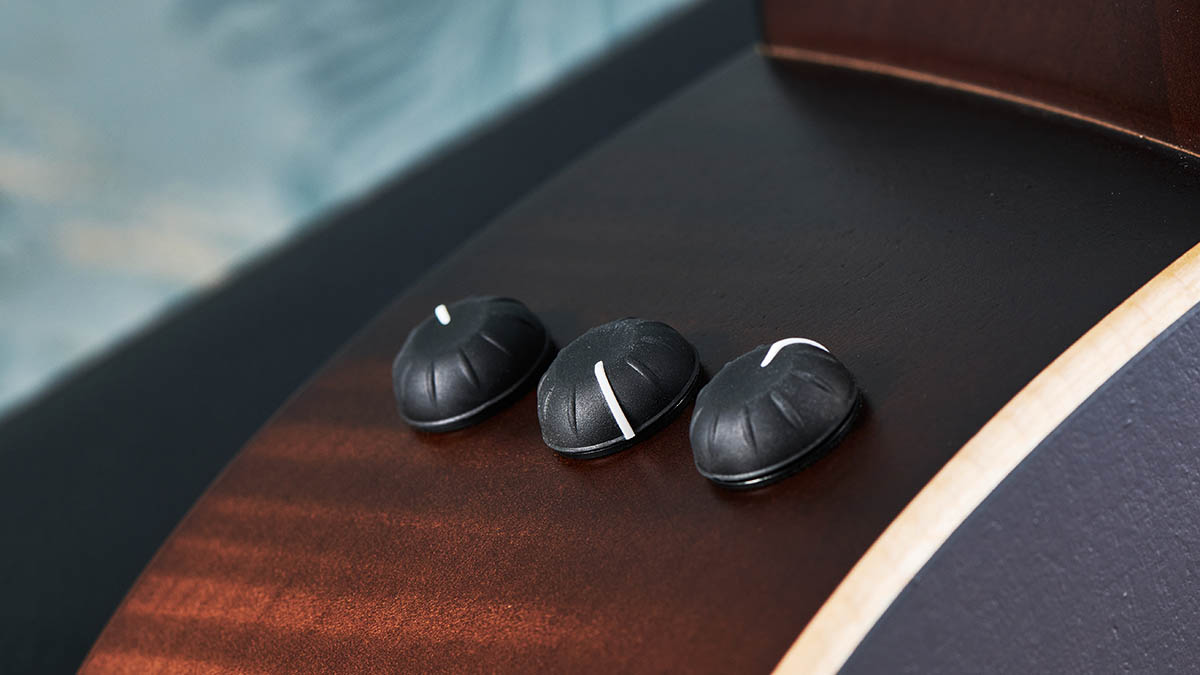
In the hand, the instrument feels very good indeed; the satin-finished neck with its everyman C profile and 44.5mm nut width lays down the welcome mat before we’ve even played a note. When we do, we like what we hear. One thing we always listen out for with dreadnoughts is the midrange hump that sometimes happens around the F and F# on the fourth string.
This is where the mud usually resides with the lower mids cloying into a thick, cloudy stew. But that’s decidedly not the case with the AD27e. We don’t know if this is down to the choice of string, the maple top or the V-Class bracing (although the latter is the chief suspect), but everything rings clean and clear in this region.
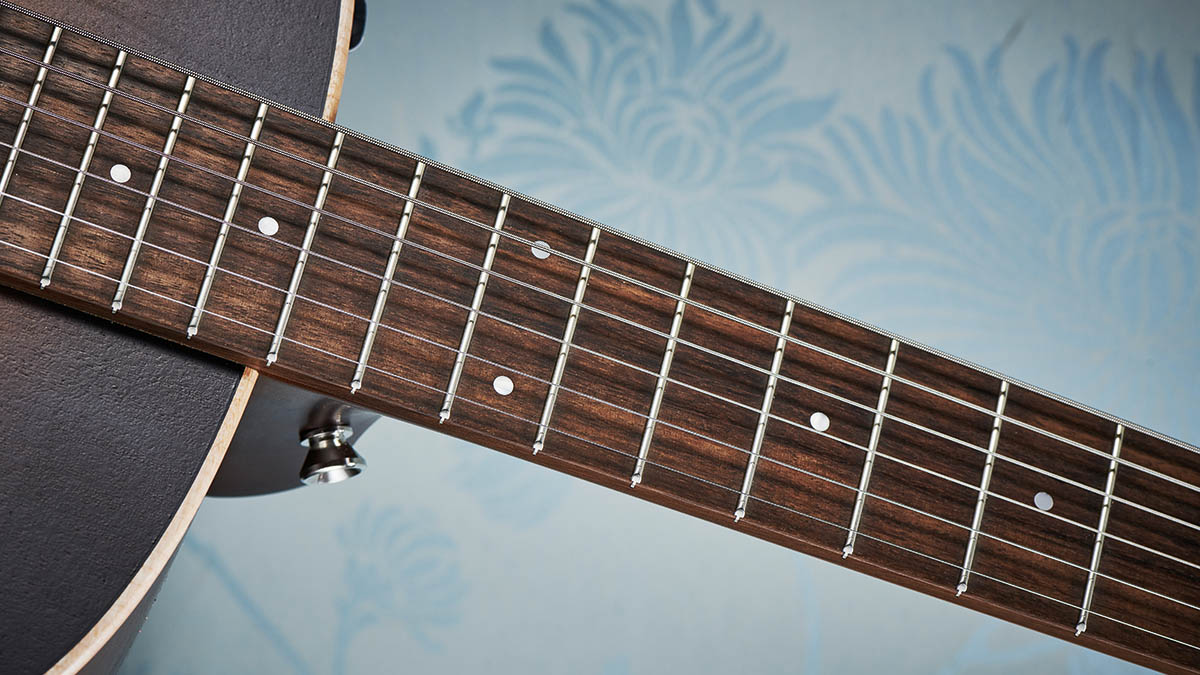
In fact, playability overall is very, very good, with a very even response across the whole range, the various frequencies playing nicely together wherever you find yourself on the fretboard. It would be true to say that it might not have quite the girth of a D-28 in the basses, but we didn’t detect anything lacking during our tests.
How do we sum up the sound? Well, if you put the sound of a Martin at one end of the spectrum and, say, a Gibson J-45 at the other, the AD27e leans more towards the Gibson end. There’s a delightful dryness to the sound; it’s woody and earthy and we very quickly found ourselves running through all our acoustic blues licks and favourite singer-songwriter chord progressions. No complaints here at all.
The AD27e is fitted with Taylor’s tried and trusted Expression System 2 pickup and preamp set, should your playing ambitions include performing on stage, but is available pickup free at a lower cost. This is a system we’ve met many times in the past and is an absolute doddle to set up live and offers a no-fuss way of playing out there in the world.
Verdict
This is undoubtedly a very bold move from Taylor, but thanks to Andy Powers’ skills as a designer and luthier we think it’s paid off in full. As a standalone instrument, the AD27e is a very good acoustic guitar with a personality all its own. As part of the American Dream Series it’s a perfect fit, too.
Of course, there’s very scant information as to how a maple top matures. We know that spruce opens up in time and so we can always leave a little room in our expectations accordingly when faced with a new spruce-topped instrument. Maple remains a bit of a mystery in this respect, but we suspect that the good sound already present here can only be built upon and enhanced in the future.
At just shy of £2.5k this acoustic is in a highly competitive market, but if you’re looking for something that leaves the path well trod you’d be well advised to seek out the AD27e – we’re pretty sure you’ll be in for a pleasant surprise.
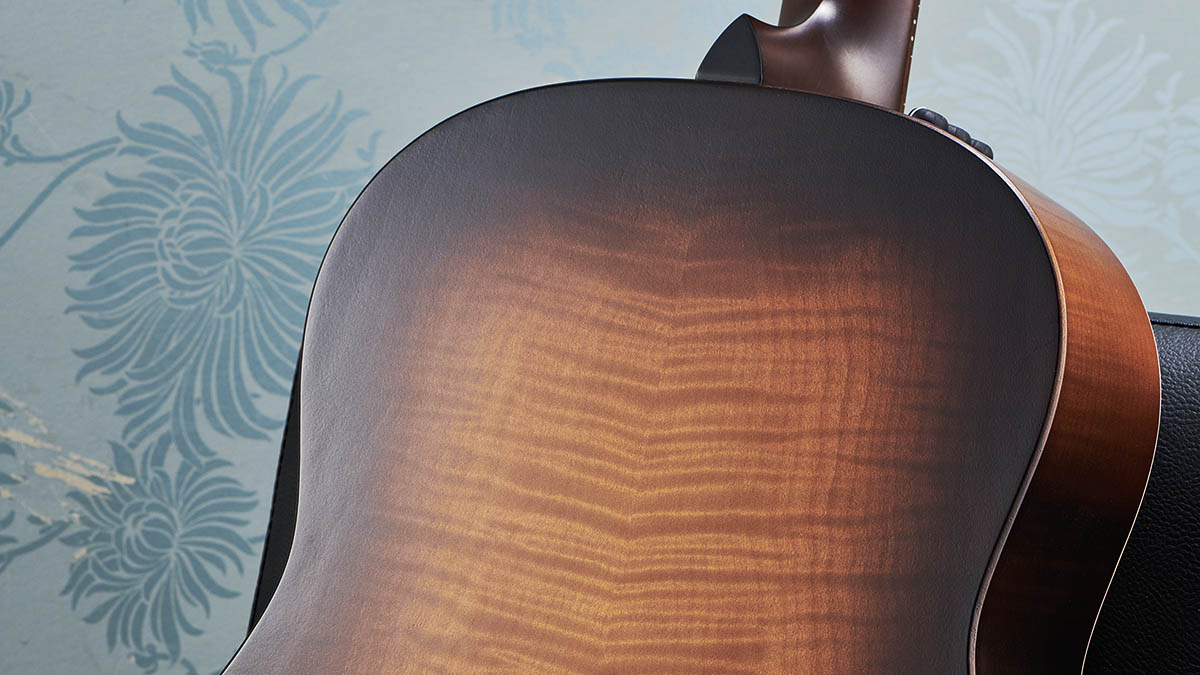
Specs
- PRICE: $2,199 / £2,495 (inc gigbag)
- ORIGIN: USA
- TYPE: Grand Pacific dreadnought
- TOP: Flame big leaf maple
- BACK/SIDES: Big leaf maple
- MAX RIM DEPTH: 117.5mm
- MAX BODY DEPTH: 406mm
- NECK: Hard rock maple
- SCALE LENGTH: 648mm (25.5”)
- TUNERS: Taylor nickel
- NUT/WIDTH: Graph Tech Tusq/ 44.5mm
- FINGERBOARD: Eucalyptus
- FRETS: 20
- BRIDGE/SPACING: Eucalyptus/56mm
- ELECTRICS: Taylor Expression System 2
- WEIGHT (kg/lb): 1.83/4.04
- OPTIONS: The AD27 is available with a mahogany top ($1,499/£1,619) and as the AD27e ($1,699/£1,835). There’s also the smaller-bodied mahogany/sapele Grand Concert AD22e ($1,699/£1,955)
- LEFT-HANDERS: Yes
- FINISH: Satin
- CONTACT: Taylor
With over 30 years’ experience writing for guitar magazines, including at one time occupying the role of editor for Guitarist and Guitar Techniques, David is also the best-selling author of a number of guitar books for Sanctuary Publishing, Music Sales, Mel Bay and Hal Leonard. As a player he has performed with blues sax legend Dick Heckstall-Smith, played rock ’n’ roll in Marty Wilde’s band, duetted with Martin Taylor and taken part in charity gigs backing Gary Moore, Bernie Marsden and Robbie McIntosh, among others. An avid composer of acoustic guitar instrumentals, he has released two acclaimed albums, Nocturnal and Arboretum.
“While the odd corner has clearly been cut, these are true Gibsons with all the individuality that this brand exhibits”: Gibson J-45 Special and Hummingbird Special review
“Fender has stripped back the price – but has it gone too far paring back the sounds, too?” Fender Standard Acoustasonic Telecaster review
